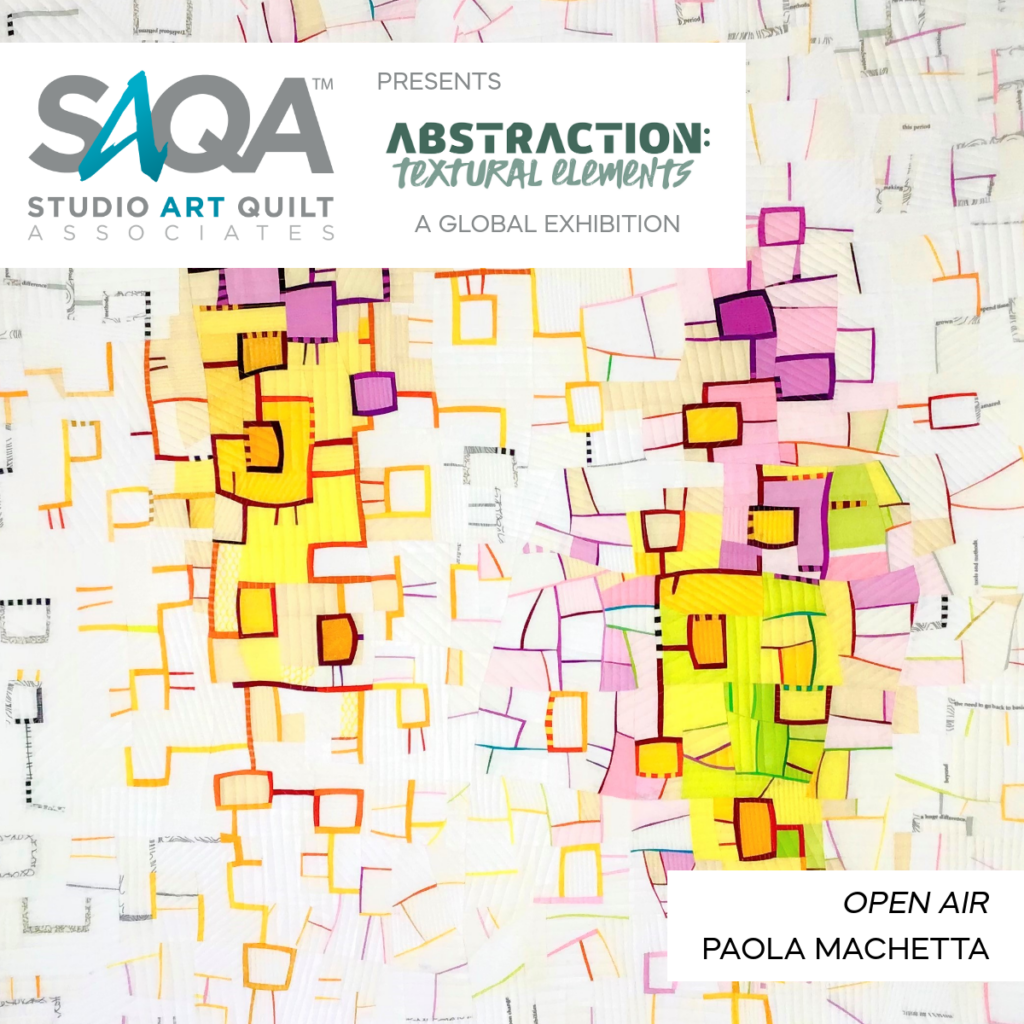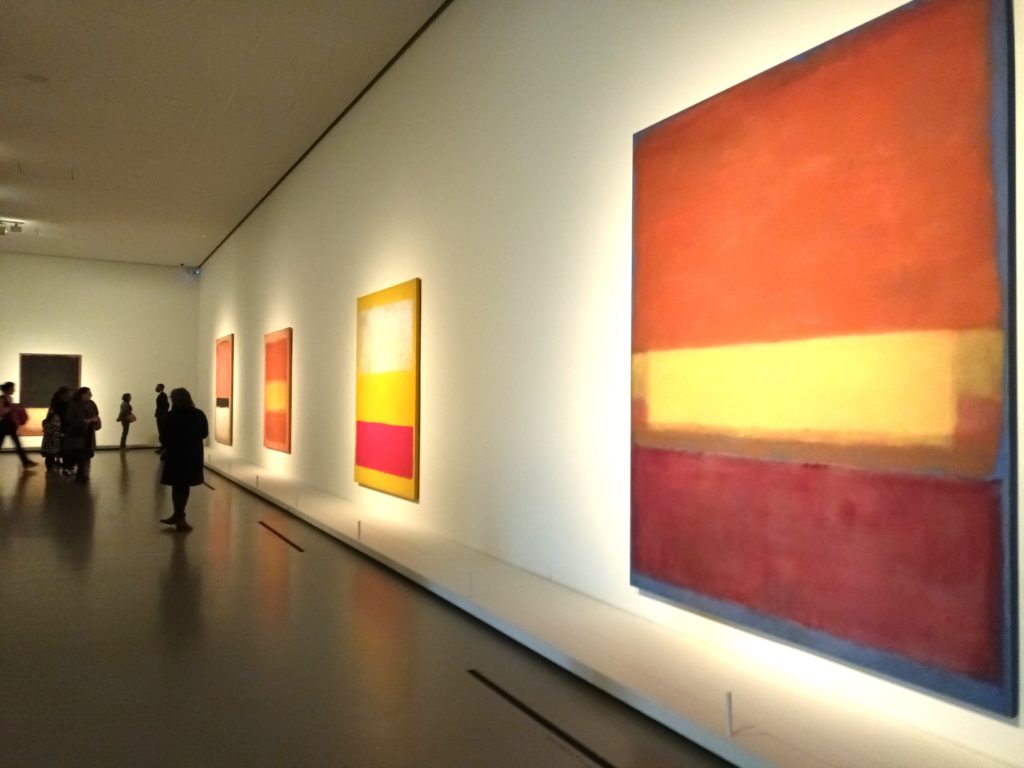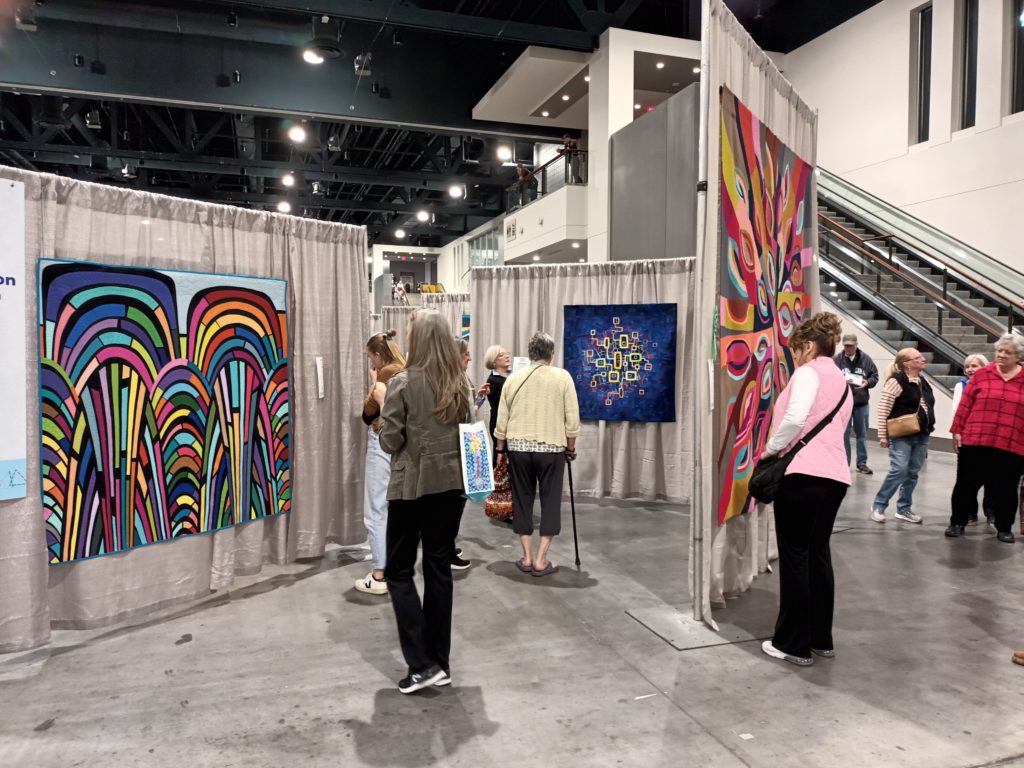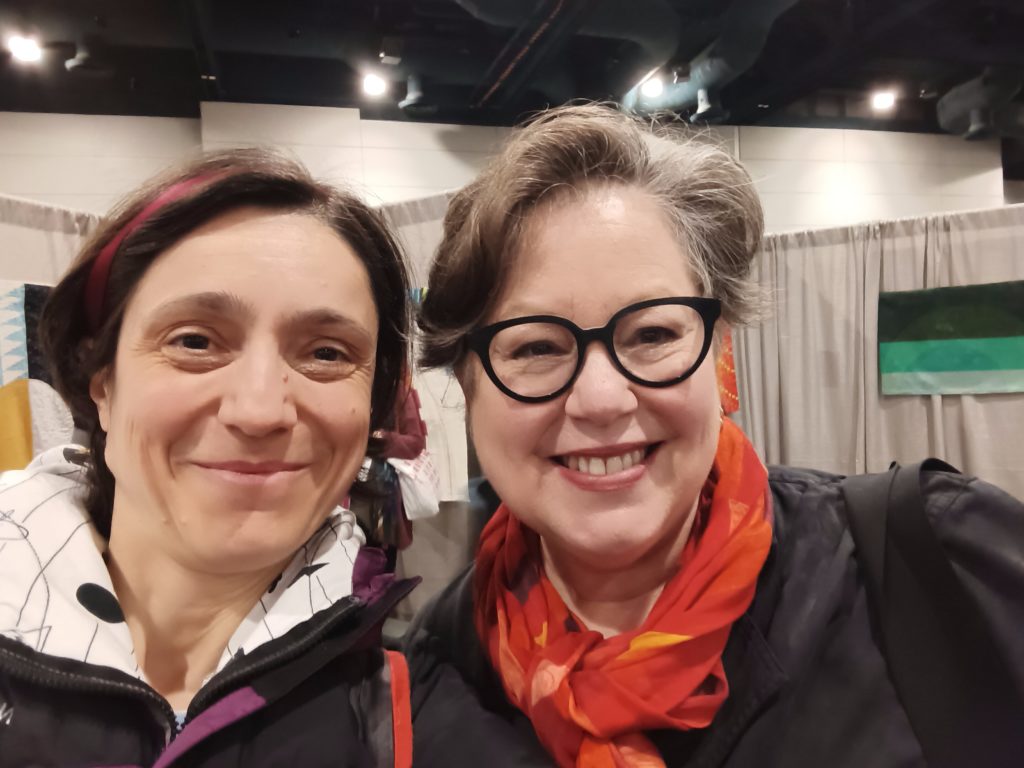A few months ago, I started a series of photos with scraps and seeds, simply as an occasion to feel better in short time, thanks to the beauty of nature and fabric colors in my hands, and the ease of photography.
Later it became something more.
It clearly resulted as a way to exercise on composition.
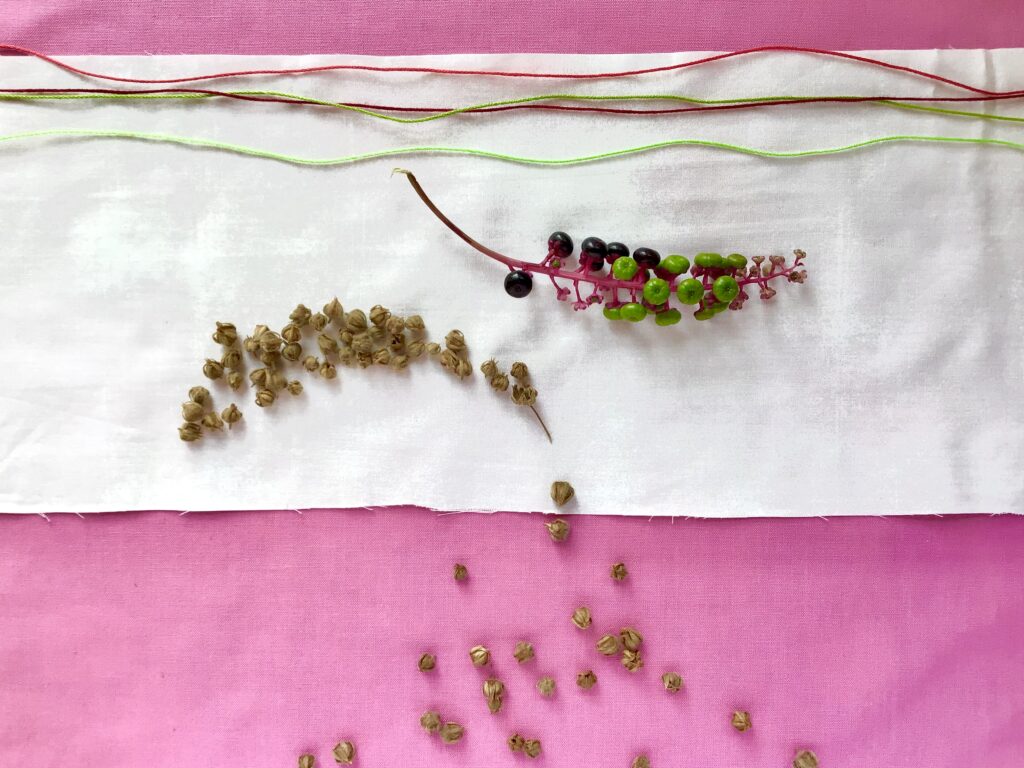


Seeds on a table are like scraps on a design wall.
The feeling of improv quilting, appearing when you try casually the positioning of fabric scraps, came to me in the same way, when I tried different versions of compositions with seeds on the photo set.
Adjusting different quilt compositions may be slow and time consuming. I have a limited design wall space: to give room to new work in progress, I needed to add a new layer of batting on top of the previous quilting work!

On the contrary, photo composition are quicker to be made. By the way, if you use fresh vegetables, you must be quick. Sometimes I have only a few days available to manipulate seed buds, because they transform quickly. I picked the ones in the picture here below from a public garden bush, named pittosporum tobira. One day, these green buds opened and revealed the red seeds inside: It was a surprise! I took a picture of them, together with the red fabric I was using for my quilt in progress. The paper fragments in this composition are from Ally @allyryde.

An additional meaning of making photo compositions came when I realized that I could use them as an occasion of connecting with quilting friends, to continue the idea started embedding the paper pieces received by Ally, together with more quilting friends.
In these days I discussed with Linda @flourishingpalms and Lenny @modernstitchwitch about the tools we use to keep connected with each other. Most of the times we chat on the socials, and very rarely we can meet face to face, thanks to a flight overseas. Since the social platforms can be changed unilaterally, we shall not be fully dependent on them: it’s better to put alternatives in place. In that sense, I’m trying to use multiple channels as networking tools, to ensure I can keep connected with people, whatever happens with one of those channels: so I try to use also e-mail and on-line meetings.
For the playtime “design with a friend” I invite you to send me a small white envelope with your quilting scraps; then, I will try to make new photo compositions with them, to send you back a small photo print. Let’s make best use also of post offices!

















